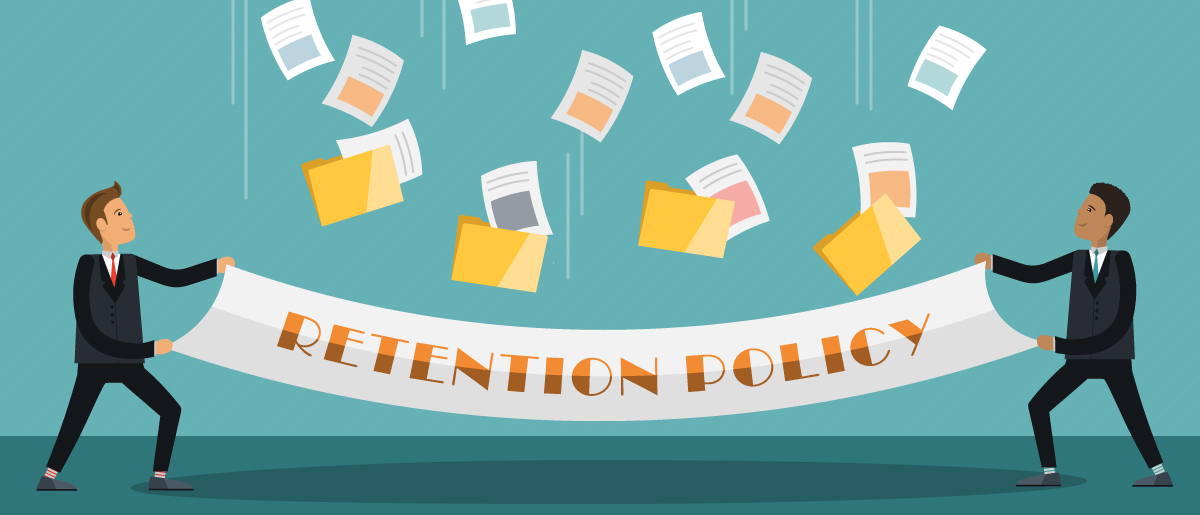Is your organization still transitioning to working online? AvePoint is offering free Office 365 migration services when buying Cloud Backup through June 30, 2020! Click here for details.
Data is intangible and can be easily lost. There are many reasons data loss can occur, from simple mis-clicks to sinister network breaches.
Organizations are increasingly facing the issues of data volume and data complexity. This includes data like emails, documents, messages, and more. Being able to efficiently manage and govern this information is important because you need to:
- Comply proactively with industry regulations and internal policies.
- Reduce the risk of a lawsuit or security breach.
- Help your organization share knowledge effectively.

1) What is a retention policy?
Due to the issues of managing high data volume, ensuring data retention is critical for organizations. To make sure that there is organizational data retention, a Office 365 retention policy must be implemented to protect important information from being lost. Retention policies enable organizations to:
- Decide proactively whether to retain content, delete content, or retain and then delete the content when needed.
- Apply a policy to all content or just content meeting certain conditions, such as items with specific keywords or specific types of sensitive information.
- Apply a single policy to the entire organization or specific locations or users.
When data is subject to a retention policy, people can continue to edit and work with the data because the content is retained in place in its original location. The retention policy ensures the content is managed in the background until the timeframe for action has been reached. For example, if an organization has a retention policy for “destroy after 7 years,” this means the content will remain in place and accessible until the 7-year timeframe is reached. At this point the retention action will be taken, and in this case, the data will be destroyed.
An Office 365 retention policy will help you achieve all your data retention goals. Managing content commonly requires two actions:
- Retaining content so that it can’t be permanently deleted before the end of the retention period.
- Deleting content permanently at the end of the retention period.
Without a robust backup solution, companies expose themselves to a multitude of risks. These include having their data held hostage by ransomware, being noncompliant with industry data retention regulations, and receiving hefty fines as a result of new GDPR laws protecting European citizen data.

2) But who’s responsible for what?
Organizations can be confused about what they are responsible for and what Microsoft is responsible for within their Office 365 environment. The chart below provides the breakdown of who is responsible for what:

Essentially, Microsoft provides disaster recovery for catastrophic events, like a natural disaster and very small short-term mistakes. Conversely, customers are responsible for protecting and maintaining all their data retention.

3) Common Customer Challenges
Since customers are responsible for all their data retention, issues will likely arise. Common customer challenges for data retention, protection, and access include:
- Data Ownership: Data sovereignty, data retention, data protection
- Restore: out of place restore, restore from former employee data, restore granular content without overwriting unrelated data
- Comprehensive coverage: Office 365 services, including: Exchange Online, SharePoint Online, OneDrive for Business, Project online, Groups, Dynamics 365 Backup
Expedited growth is another common situation organizations face. Organizational growth can escalate so quickly that a drive can’t be stood up quickly enough or adapt quickly enough. Implementing an Office 365 retention policy with Office 365 backup options allows flexibility for organizations as they grow. All of these situations is where using a third-party vendor, like AvePoint, makes sense.

AvePoint Cloud Backup
AvePoint Cloud Backup provides organizations with:
Unlimited automated Office 365 backup options for your Microsoft Cloud assets:
- Automatic Backups: up to 4x a day for Dynamics 365, Office 365, SharePoint Online, OneDrive for Business, Exchange Online, Project Online and Groups
- Unlimited Options: Gives you flexibility to protect content as your organizational needs dictate.
Granular restore, in or out of place:
- Search for and filter content for restore based on properties
Visibility and control over protected content:
- Simple dashboard display that gives immediate insight into services covered.
Comprehensive Protection
- Backup your Office 365 & Dynamics 365 content from a single service. No need for multiple backup vendors, locate data across multiple cloud services for restore.
Office 365 Backup Data Ownership
- Store backup data with the storage provider of your choice – including AvePoint! Bring your own storage, or take advantage of AvePoint’s unlimited offering to avoid storage limitations.
SLAs on Your Own Terms
- Quick, on-demand recovery ensures you have access to data when you need it most.
Interested in learning more about Office 365 backup best practices and how implementing an Office 365 retention policy with Backup can help protect your organization’s data? Check out our Office 365 Backup Webinar or visit AvePoint’s page to learn more!
Like what you read? Be sure to subscribe to our blog to stay in the fold for all things Office 365, SharePoint and more!






